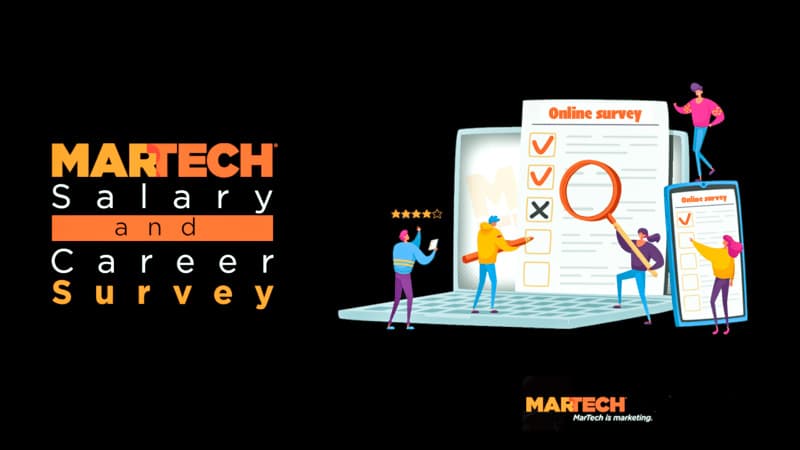In the year ahead, digital advertisers will be looking to harness AI and new metrics in the evolving digital space. They want to keep budgets down, even as a busy political campaigning season will drive prices up. Above all, they want to make sure they’re connecting with customers in meaningful ways.
Attention metrics will capture marketers’ attention and meaningful engagement
As seen in our 2024 data predictions, the phasing out of third-party cookies is almost certain. Marketers, publishers and adtech partners all will be looking to more meaningful signs of engagement, including attention metrics.
“Marketers are recognizing the significance of meaningful interactions over mere impressions or clicks,” said Angelina Eng, VP of Measurement, Addressability and Data Center at IAB. “Attention metrics offer a more nuanced understanding of how users engage with content, prompting this transition among marketers seeking more impactful and effective advertising strategies.”
Attention metrics are tied to engagement time, focus and quality of interaction. Marketers can use them to complement or replace traditional clicks and views.
In 2024 IAB is partnering with the Media Rating Council to roll out standardized attention measurement guidelines.
“These guidelines will provide clearer consistency and transparency in how attention is measured, allowing for a more uniform approach across the industry,” Eng said. “This will ultimately enable advertisers and publishers to better understand and optimize for user engagement, ensuring that attention metrics become a reliable and integral part of digital advertising strategies.”
“In this new ID-less environment, attention metrics will enable advertisers to go beyond static metrics such as click-through rate,” said Giles Rekruciak, platform director, U.S., for digital media technology company Adlook. “They’ll instead be able gauge how a specific ad placement is able to capture the attention of the users – providing insight into user behavior, preferences and receptiveness to ads.”
Marketers focus on supply path optimization
Marketers won’t just be looking for better measurement on the impact of ads. They’ll be looking at how the ads are delivered, using supply path optimization (SPO) to measure efficient spending.
“SPO has been a huge topic over the past few years, as brands have sought to identify and eliminate unnecessary intermediaries,” said Rekruciak. “This has the effect of reducing the number of hops between the buyer and the seller, minimizing latency, improving the efficiency of ad delivery, and of course saving money.”

Take Martech’s 2024 Salary and Career Survey
From AI to layoffs, it’s been quite a year. We’d like to know how it’s been for you. Please take this short survey so we can have your input on the state of martech salaries and careers.
He added: “As third-party IDs become less usable, SPO will take a larger role in ensuring media dollars are spent properly — increasingly with established premium and vetted inventory partners. In addition, the increased need for privacy protections will likely further push brands toward adopting more efficient — and controllable — campaign executions.
Dig deeper: What every marketer needs to know about programmatic advertising
Politics will drive up costs and turn off consumers
Did you know there’s an election in 2024? The digital landscape will be more polarized than ever, and advertisers will have two big headaches: cost and political toxicity.
“Given the increased cost of media during any U.S. presidential election year, brands will get less for their money,” said Reid Carr, CEO and executive creative director of marketing agency Red Door Interactive. “Those that have planned for this are a step ahead, but many haven’t, meaning those brands will need to pull budget from other investments or get creative with what they have.”
Brands that dare to be timely about political issues in their messaging will have to be extra careful not to offend potential customers. If customers are even listening to begin with. Many are likely to change their media habits to avoid the noise.
“Media consumption is going to shift,” Carr said. “People may want to tune out the noise or find respite in different channels and feeds. It will be very difficult to use last year’s metrics to measure performance against 2024.”
He added: “It will be difficult for messaging to break through, especially in late October and November, which could result in media fatigue in early December. This could create a ‘hangover’ effect and negatively impact holiday promotions. Brands must plan to make their 2024 numbers throughout alternative parts of the year.”
More bundling for streaming services
The migration of must-see TV to streaming on-demand services has resulted in fragmentation. Instead of flipping through a thousand channels on a single cable service provider, cord-cutters have to sift through a seemingly endless menu of separate apps. And unless their streaming diet is entirely ad-supported, they’re paying for these apps on separate bills.
2024 could very well be the pivotal year when the streaming industry steps up and offers more bundles.
“Fragmentation across streaming, and especially sports content, has reached an inflection point,” said Dina Roman, SVP, global ad sales, Fubo. “Consumers have grown frustrated with the increasing number of subscriptions required to watch all of their programming, and advertisers are challenged with reaching their strategic target audiences across a growing number of media partners and devices.”
She added: “Now is the time when the power of aggregation will show its value, and we will see a return to bundling across streaming. We have to continue to work as an industry to make life easier for consumers and, by extension, advertisers.”
AI will continue to deliver high-quality ads and lower costs
The power of generative AI and machine learning is disruptive to all areas of marketing, including advertising. Updates to major platforms are still in the process of rolling out. In the new year, as more tools are adopted, AI will make digital campaigns even easier to plan and execute.
“While product retargeting often leverages a large number of customized ads that show particular products, most other types of campaigns typically use just a small number of static ads,” said Frost Prioleau, CEO of digital advertising company Simpli.fi. “The first impact of this current wave of AI advancements has been to lower costs and time required to make high-quality ads’ creative, often with many variations. Going forward, AI will provide a variety of other benefits, including data analysis, simplified user interfaces and media planning, and automated customer service.”
“In 2024, we will see more marketers leverage generative AI for content creation and, particularly, media measurement,” said Laura Manning, SVP, measurement for digital insights company Cint. “The ability to leverage AI to quickly, and accurately, analyze large data sets will be of great advantage to advertisers and marketers in the new year. This will likely see the industry experience some growing pains, and it will be imperative that market players work together to put more processes in place when it comes to the use of AI in marketing and advertising.”
“AI is already impacting audience measurement and we’re going to see more of it in 2024,” said Jonathan Bohm, VP of product for software and data company VideoAmp. “Even in its simplest form, folks in media are treating the ChatGPTs of the world as their own personal libraries and adtech consultants. The real opportunity for AI is in helping identify and streamline repeatable patterns, like identifying post-air schedules, understanding the push-and-pull behavior of viewership and the impact of fragmentation – which is something that has mystified the industry for over a decade, almost entirely due to measurement limitations.”
The post 2024 Predictions: Advertising and digital media appeared first on MarTech.
























































![Key Metrics for Social Media Marketing [Infographic] Key Metrics for Social Media Marketing [Infographic]](https://www.socialmediatoday.com/imgproxy/nP1lliSbrTbUmhFV6RdAz9qJZFvsstq3IG6orLUMMls/g:ce/rs:fit:770:435/bG9jYWw6Ly8vZGl2ZWltYWdlL3NvY2lhbF9tZWRpYV9yb2lfaW5vZ3JhcGhpYzIucG5n.webp)

















